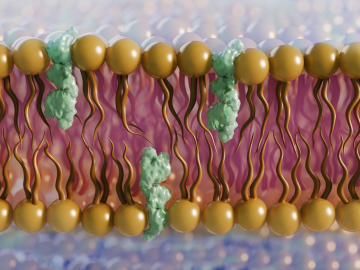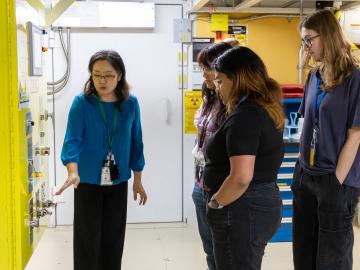
Filter News
Area of Research
News Topics
- (-) Composites (11)
- (-) Emergency (3)
- (-) Neutron Science (82)
- 3-D Printing/Advanced Manufacturing (56)
- Advanced Reactors (12)
- Artificial Intelligence (77)
- Big Data (45)
- Bioenergy (68)
- Biology (80)
- Biomedical (42)
- Biotechnology (25)
- Buildings (30)
- Chemical Sciences (35)
- Clean Water (16)
- Computer Science (111)
- Coronavirus (19)
- Critical Materials (5)
- Cybersecurity (14)
- Education (2)
- Energy Storage (32)
- Environment (116)
- Exascale Computing (51)
- Fossil Energy (6)
- Frontier (44)
- Fusion (38)
- Grid (32)
- High-Performance Computing (81)
- Hydropower (6)
- Isotopes (33)
- ITER (4)
- Machine Learning (37)
- Materials (51)
- Materials Science (55)
- Mathematics (8)
- Mercury (7)
- Microelectronics (3)
- Microscopy (23)
- Molten Salt (2)
- Nanotechnology (17)
- National Security (60)
- Nuclear Energy (66)
- Partnerships (36)
- Physics (34)
- Polymers (9)
- Quantum Computing (35)
- Quantum Science (48)
- Security (16)
- Simulation (42)
- Software (1)
- Space Exploration (13)
- Statistics (2)
- Summit (40)
- Transportation (30)
Media Contacts

Researchers used the Summit supercomputer at ORNL to answer one of fission’s big questions: What exactly happens during the nucleus’s “neck rupture” as it splits in two? Scission neutrons have been theorized to be among those particles emitted during neck rupture, although their exact characteristics have been debated due to a lack of conclusive experimental evidence of their existence.

Biochemist David Baker — just announced as a recipient of the Nobel Prize for Chemistry — turned to the High Flux Isotope Reactor (HFIR) at Oak Ridge National Laboratory for information he couldn’t get anywhere else. HFIR is the strongest reactor-based neutron source in the United States.

ORNL researchers were honored with a prestigious ACE Award for Composites Excellence by the American Composites Manufacturers Association. The team won the “innovation in green composites design” prize for creating a fully recyclable, lightweight wind turbine blade tip that incorporates low-cost carbon fiber and conductive coating for enhanced protection against lightning strikes.

Scientists at ORNL used neutrons to end a decades-long debate about an enzyme cancer uses.

ORNL's Spallation Neutron Source, the nation’s leading source of pulsed neutron beams for research, was recently restarted after nine months of upgrade work.

Distinguished materials scientist Takeshi Egami has spent his career revealing the complex atomic structure of metallic glass and other liquids — sometimes sharing theories with initially resistant minds in the scientific community.

Using LEGO® bricks, Robert Saethre has worked to create a model of the ring injection region of the SNS pulsed accelerator that features the new Proton Power Upgrade magnets and vacuum chambers.

A group of scientists at the Department of Energy’s Oak Ridge National Laboratory have conducted neutron scattering research to reveal key information about fungus cell membranes that could aid in developing new antifungal treatments.

At ORNL, a group of scientists used neutron scattering techniques to investigate a relatively new functional material called a Weyl semimetal. These Weyl fermions move very quickly in a material and can carry electrical charge at room temperature. Scientists think that Weyl semimetals, if used in future electronics, could allow electricity to flow more efficiently and enable more energy-efficient computers and other electronic devices.

The 26th annual National School on Neutron and X-ray Scattering School concluded on August 9, 2024. Each year, more than 200 graduate students in North America studying physics, chemistry, engineering, biological matter and more compete to participate in NXS. However, given limited space, only 60 can be accepted. The school exposes graduate students to neutron and X-ray scattering techniques through lectures, experiments, and tutorials.


